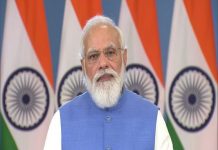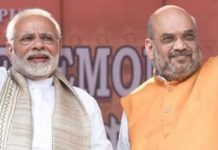
There was bonhomie between the two leaders and a slew of takeaways. As US President Barack Obama left India, observers felt that the trip was a hit. The nuclear logjam over the liability issue was broken, Washington decided to invest $4 billion — including $2 billion in renewable energy, $1 billion in Indian small and medium firms and the remaining to boost American exports to India — and New Delhi said it would cut red tape to woo investments.
Despite the successes, there were several unresolved issues. These related to critical problems in areas such as the existing Indian patent regime, transfer pricing of goods and services between the foreign parent companies and their Indian subsidiaries and opening doors to foreign entities to invest in e-retail, or online retail. The hopefuls in both the countries felt that Obama and Prime Minister Narendra Modi would find solutions to them. But they didn’t.
Since 2005, Washington has twisted New Delhi’s arms to change Clause 3(d) of the Indian Patents Act. The reason: it restricts foreign companies, especially in the pharmaceutical sector, to earn royalties on products (drugs) they have discovered or invented and patented. Although India adopted a product patent regime, as opposed to a process patent one, this clause left a loophole that allowed Indian firms to wriggle around the other restrictions in the Act.
Process patent was a boon for Indian firms. Under it, they could sell a drug, which was patented by global firms, if they could prove that they had changed — even slightly — the chemical process to manufacture it. Global pharmaceutical majors felt this was unfair as they spent billions of dollars to discover a medicine, but could not earn royalties on it because Indian, Chinese or other competitors could sell it at a cheaper price by merely changing the manufacturing process.
Product patent changed the rules of the game. Now even if a company used a different route to make a drug, it would be illegal. But there remained a window of opportunity, thanks to Clause 3(d). Broadly, it said that India would not grant a patent to any drug unless the manufacturer could prove that it had hugely enhanced the efficacy to treat a specific disease. Take the example of a global firm, which held a patent for a cancer drug that expired after a specific period. It could not reclaim the patent by introducing a new, but similar, product, which had similar efficacy levels.
Obviously, if India denied the patent to the new product, it would become off-patent and Indian firms could manufacture it. Foreign players felt this was unfair. Each drug had a life cycle; there were incremental developments to improve it, which still cost hundreds of millions of dollars. Therefore, the discoverer or inventor should enjoy the patent and earn royalties over a longer period. Critics claimed that this was an argument that allowed the foreigners to enjoy, what they called, ever-greening, or continue to hold patent rights over the same drug.
The impasse continues and Obama and Modi failed to reach an agreement on it.
Ambiguities in transfer pricing have led to several litigations between foreign firms and Indian tax authorities. According to estimates, about 250 cases are pending against US companies. The tax liabilities are huge; the UK-based Shell was asked to shell out Rs 18,000 crore and the US-based IBM over Rs 5,000 crore. Others who find themselves in the tax net include the UK-based Cairn (Rs5,000 crore) and Finland-based Nokia (almost Rs 4,000 crore).
In effect, transfer pricing relates to business transactions between the foreign parent and its Indian subsidiary. The parent can buy goods and services from its sister firm, or sell them to it. In the former case, the subsidiary can lower its price to reduce the parent’s costs; in the latter, the price can be hiked to increase the parent’s profits. In both the examples, the taxmen lose.
If the subsidiary understates its price, it shows a lower profit and pays lower taxes. If the parent hikes its price, the implications are more complex. Suppose the parent’s cost for a certain product or service is $1,000. Its distribution cost is $100 to sell to the Indian subsidiary. The subsidiary further sells it in the Indian market at $1,200, and earns a profit of $100. However, this profit is not shown in the books of the subsidiary, but is transferred back to the parent. The tax authorities believe this is a deliberate attempt on the part of the subsidiary to show ‘nil’ profit and, hence, not pay any tax.
Last year, in his Budget speech, Finance Minister Arun Jaitley promised several changes in the transfer pricing regime. He said that he would align the Indian regulations with the “best available” global practices, and introduce “necessary legislative amendments” to achieve the objective. However, most foreign firms, including Americans, are unhappy. They want New Delhi to adopt policies that are clear and transparent and will lower their tax burdens.
In fact, the Modi regime has started to make the right noises. On 28 January, the government decided not to appeal against the Bombay High Court order granting tax relief to telecom major Vodafone.
“We want to convey a clear and positive message to investors globally that we will be fair, transparent and within the four corners of law,” said Telecom Minister Ravi Shankar Prasad.
The government’s decision will provide a breather to several multinationals that are engaged in similar tax disputes with the Income Tax department.
Washington put pressure on New Delhi to allow foreign direct investment in the organised retail sector. The US-based Wal-Mart, a retail conglomerate, took the lead to successfully lobby for it. Now, there is a serious attempt by Amazon, an American e-retailer, or online retailer, to force India to open up this sector. Like in the case of organised retail earlier, Indian firms oppose the new move. Observers hoped that Obama and Modi may reach a settlement on this tricky issue too. But it didn’t happen. Amazon will have to use the indirect route, which it has, to grow in India.
Clearly, Obama’s claim — India can be America’s best partner in trade and investments — will not turn into reality as long as there are no solutions to the above-mentioned thorny issues. Modi’s optimism that Americans will queue up to pump money into India too will remain a dream unless there is clarity on patents and transfer pricing.
One of them needs to blink first; maybe they will both blink together to clear the air over the next few months.
letters@tehelka.com












